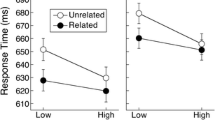Abstract
Are learning processes selection processes? This paper takes a slightly modified version of the account of selection presented in Hull et al. (Behav Brain Sci 24:511–527, 2001) and asks whether it applies to learning processes. The answer is that although some learning processes are selectional, many are not. This has consequences for teleological theories of mental content. According to these theories, mental states have content in virtue of having proper functions, and they have proper functions in virtue of being the products of selection processes. For some mental states, it is plausible that the relevant selection process is natural selection, but there are many for which it is not plausible. One response to this (due to David Papineau) is to suggest that the learning processes by which we acquire non-innate mental states are selection processes and can therefore confer proper functions on mental states. This paper considers two ways in which this response could be elaborated, and argues that neither of them succeed: the teleosemanticist cannot rely on the claim that learning processes are selection processes in order to justify the attribution of proper functions to beliefs.
Similar content being viewed by others
Notes
See for example (Papineau 1987, p. 65) “When we talk of some characteristic C being present in order to produce E, we should understand ourselves to be claiming that C is now present because of some past selection process that favoured C because it produced E.”
See (Millikan 1984, pp. 41–43).
The term “proper function” was coined by Millikan (1984). There are other kinds of function, but in this paper “function” can be taken to mean “proper function,” since proper functions are the only kind I am concerned with here.
The example is appropriated, with thanks, from an anonymous referee for Biology and Philosophy.
For more detail on operant conditioning as a selection process, see Hull et al. 2001, pp. 521–526.
Thanks to Kim Sterelny for this point.
Soames (1989, p. 589) argues that I can acquire a belief such as the belief that Paris is the capital of France simply by hearing, understanding and accepting a sentence that expresses it. I may need to know that “Paris” and “France”, say, are names (maybe even that they are place names) and I may also need to know roughly what it means for something to be the capital of something else, but our syntactic competence will do the rest. On hearing, understanding and accepting the sentence “Paris is the capital of France”, I come to hold a belief, whether or not I know where Paris or France is. If Soames is right that we do sometimes gain beliefs in this way, then such acquisition processes are good examples of ones that do not involve discarding alternative hypotheses.
Too many people to list have given useful comments on earlier versions of this paper: my thanks to all of them, and in particular to Maite Ezcurdia, Jonathan McKeown-Green, Tahua O’Leary and Kim Sterelny.
References
Bornstein M (1985) Infant into adult: unity to diversity in the development of visual categorization. In: Mehler J, Fox R (eds) Neonate cognition: beyond the blooming, buzzing confusion. Lawrence Erlbaum Associates, Hilldale, NJ, pp 115–138
Chomsky N (1959) Review of B.F. Skinner’s Verbal Behavior. Language 35:26–58
Darden L, Cain J (1989) Selection type theories. Philos Sci 56:106–129
Godfrey-Smith P (1996) Meaning, models and selection: a review of Philosophical Naturalism. Philos Phenomenol Res 61:673–678
Godfrey-Smith P (2001) The role of information and replication in selection processes. Behav Brain Sci 24:538
Hayne H (1996) Categorization in infancy. In: Rovee-Collier C, Lipsitt L (eds) Advances in infancy research, vol 10. Ablex Publishing Corporation, New Jersey, pp 79–120
Hrdy S (1999) Mother nature: a history of mothers, infants and natural selection. Pantheon House, New York
Hull, David L, Langman, Rodney E, Glenn Sigrid S (2001) A general account of selection: biology, immunology and behavior. Behav Brain Sci 24:511–527
Millikan R (1984) Language, thought and other biological categories. MIT Press, Cambridge, Mass
Neander K (1991a) Functions as selected effects: the conceptual analyst’s defense. Philos Sci 58:168–184
Papineau D (1987) Reality and representation. Basil Blackwell, Oxford
Papineau D (1993) Philosophical naturalism. Basil Blackwell, Cambridge, MA
Piatelli-Palmerini M (1989) Evolution, selection and cognition: from “learning” to parameter setting in biology and in the study of language. Cognition 31:1–44
Soames Scott (1989) Semantics and semantic competence. Philos Perspect 3:575–596
Spelke E (1985) Perception of unity, persistence, and identity: thoughts on infant’s conceptions of objects. In: Mehler J, Fox R (eds) Neonate cognition: beyond the blooming, buzzing confusion. Lawrence Erlbaum Associates, Hilldale, NJ, pp 89–114
Author information
Authors and Affiliations
Corresponding author
Rights and permissions
About this article
Cite this article
Kingsbury, J. Learning and selection. Biol Philos 23, 493–507 (2008). https://doi.org/10.1007/s10539-008-9113-2
Received:
Accepted:
Published:
Issue Date:
DOI: https://doi.org/10.1007/s10539-008-9113-2




